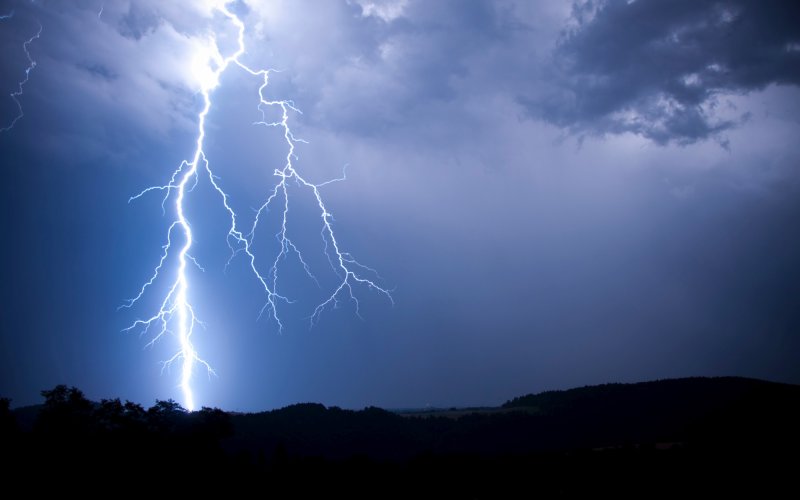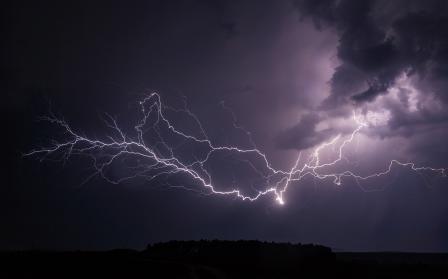The most common way to draw lightning is a zigzag line from the cloud to the ground. However, this is not the only way lightning can strike. This relates to the rather complicated way in which lightning is produced in a storm cloud.
Even though it is made up of only water, a storm cloud is a huge structure, ranging from a few kilometres above the ground to 12 kilometres up. Some clouds can peak up to 20 kilometres above the ground! The top of the cloud reaches into the cold tropopause and is made up of ice chunks. Intense updrafts and downdrafts occur throughout the cloud. Droplets of water carried up by the upward flow collide with descending heavy chunks of ice. These are the nuclei of hail, known as graupel.
When they collide, charge is transferred by the triboelectric effect. The falling ice chunks carry a negative charge to the bottom of the cloud, while the rising droplets carry a positive charge upwards. Gradually, a large positive charge builds up at the top of the cloud, while a negative charge builds up at the bottom. Areas of separated charge can split into several other regions due to movements in the cloud.
A very strong electrical voltage is created between the charges. Because air is a poor conductor, it acts as an insulator and prevents electric current from flowing between areas of opposite charges. But when a really big charge builds up, the strength of the electric field overcomes the insulating power of the atmosphere and a lightning strike occurs.
There are three types of lightning of which the one from the cloud to the ground is the least common. The most usual is the equalization of the electrical charge between two areas of cloud. This creates what's called intra-cloud lightning. If several storm clouds are next to each other, the discharge can jump between them in a so-called cloud-to-cloud flash.
But for us humans, the cloud-to- ground flash is the most interesting. It represents only about 20 percent of all discharges. When a negative charge builds up on the underside of a storm cloud, it causes a region of positive charge to form on the ground. This builds up on tall objects, trees, houses or lightning rods. When the electric field is strong enough, the charges begin to ionize the air around them, creating a conductive channel. One rises from the ground to the cloud, the other descends from the cloud. When they meet, a conducting channel of ionised plasma is created through which the charges are balanced in a flash.
At that moment, an unimaginable energy of 200 MJ to 7 GJ is released! It’s exactly the same when lightning occurs in a cloud or between clouds.
After a cloud-to-ground flash, a large charge still remains accumulated in the upper part of the cloud, which can trigger another kind of lightning. This discharge is directed upwards and is poetically named red sprites for its appearance. It looks like a set of tendrils and branches developing above the storm cloud at an altitude of 50 to 90 kilometres above the Earth’s surface. Because it takes place in a thin atmosphere, it is rather cold and could be likened to a light of a fluorescent bulb. Its red colour is caused by the ionisation of nitrogen.
Want to ask something?
Send us an e-mail with the subject “Physics mysteries” to the address:
We can't wait to tackle your interesting questions!






